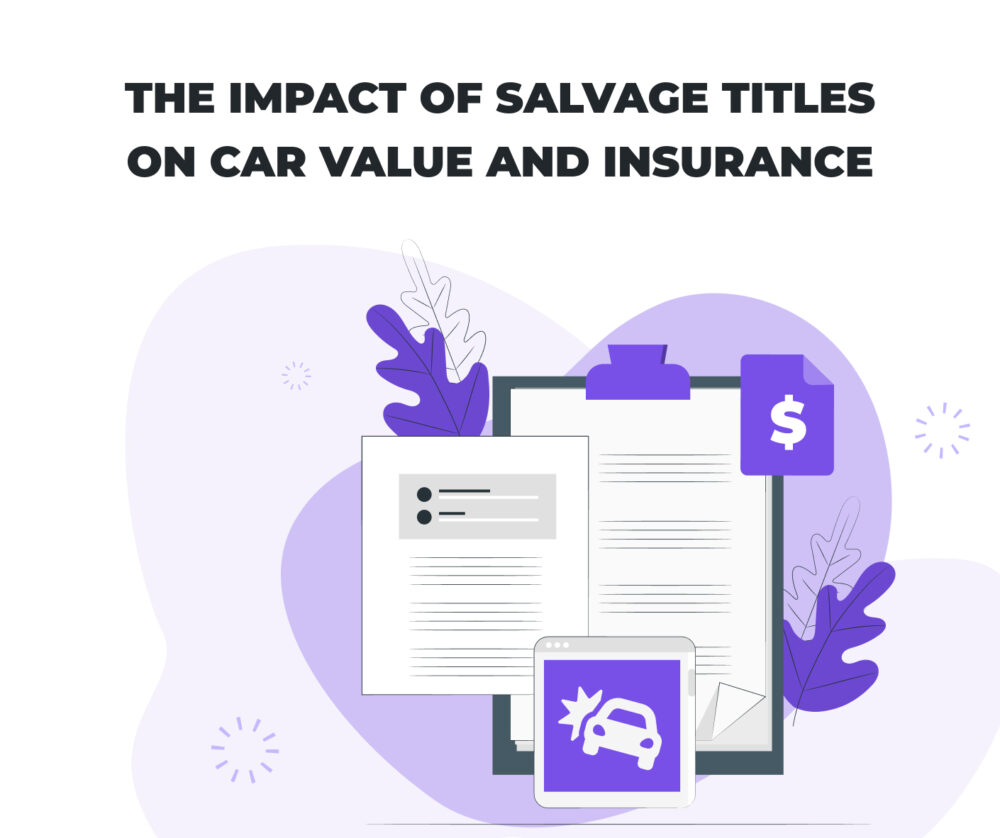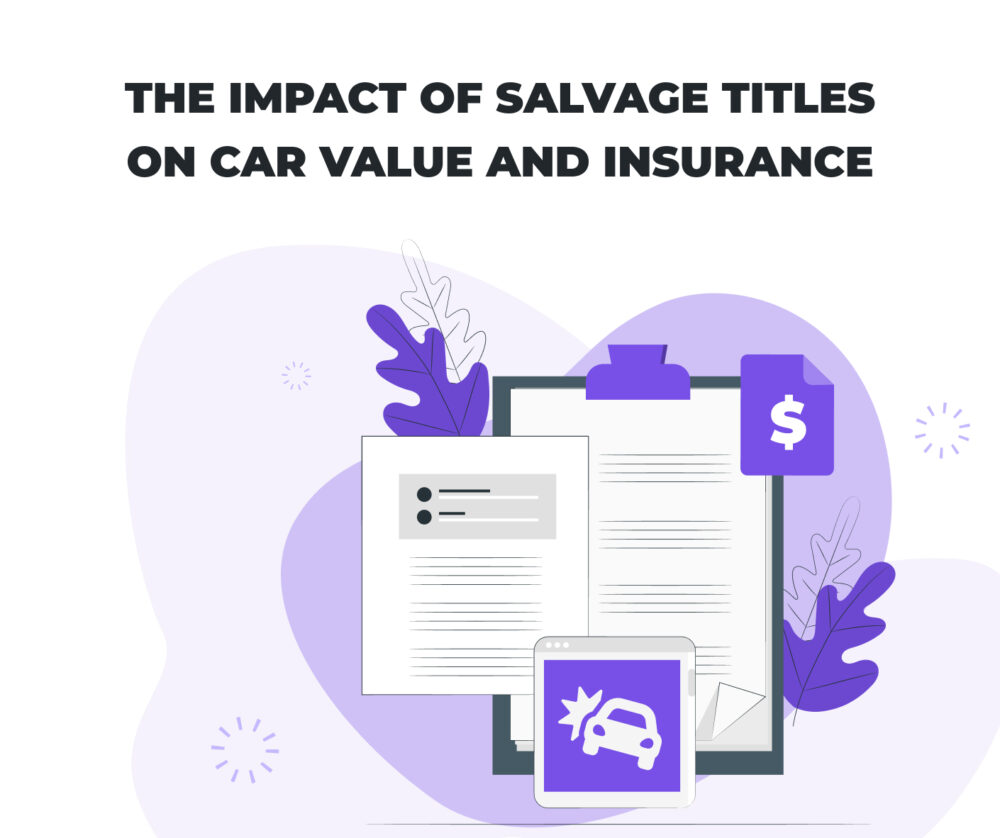Buying a car with a salvage title can seem like a tempting way to save money, but it comes with significant risks and complications. A salvage title is issued when a vehicle has been declared a total loss by an insurance company due to severe damage or theft recovery. While these cars are often sold at a lower price, they come with hidden challenges that can affect their value, insurability, and future resale potential. In this article, we will explore how salvage titles impact a car’s value, the difficulties in securing insurance, and the pros and cons of purchasing such vehicles. Understanding these factors will help you make an informed decision when considering a salvage title vehicle. For a detailed vehicle history report and to check a car’s salvage status, visitstat.vin.
Understanding Salvage Titles
A salvage title is a legal designation given to a vehicle that has been significantly damaged, often to the point where repairs are deemed uneconomical or unsafe. When an insurance company determines that a vehicle’s repair cost exceeds a certain percentage of its market value, it is declared a total loss and issued a salvage title. While these vehicles may still be operable after repairs, their history as a total loss significantly affects their value and insurability. Understanding the details of salvage titles is essential for anyone considering buying or selling such a vehicle.
Definition and Criteria
A salvage title is issued when a vehicle has sustained significant damage from an accident, natural disaster, or other catastrophic event, making the cost of repair higher than a specific percentage of the vehicle’s pre-damage value. This percentage varies by state but is typically between 60% and 80% of the car’s market value. For example, if a car valued at $10,000 requires $7,000 in repairs, an insurer may declare it a total loss and issue a salvage title.
Vehicles that receive salvage titles may include:
- Cars involved in major accidents
- Flood-damaged or hurricane-damaged vehicles
- Vehicles with significant fire damage
- Stolen and later recovered cars with extensive damage or missing parts
Once a salvage title is issued, the vehicle’s history is permanently marked, which significantly lowers its market value and creates challenges when attempting to secure financing or insurance.
Reasons for Issuing a Utilization Certificate for a Vehicle
A utilization certificate is similar to a salvage title but applies when a vehicle is deemed beyond repair or unsafe for the road. It is essentially a certificate of destruction, which means the vehicle can only be used for parts or scrap metal. The reasons for issuing a utilization certificate include:
- Severe structural damage that compromises the car’s safety
- Complete engine failure or damage to the frame
- Burned-out interiors or wiring damage from fire or water
- Vehicles involved in legal issues (e.g., fraud, stolen and abandoned cars)
Vehicles with utilization certificates cannot be registered for road use unless they undergo extensive repairs and pass a government inspection, which may not be possible or economically feasible.
Process of Issuance
The process of issuing a salvage title begins when an insurance company declares a vehicle a total loss. This typically follows an accident, natural disaster, or theft recovery.
- Damage Assessment – An insurance adjuster assesses the extent of damage and calculates the repair cost.
- Market Value Evaluation – The vehicle’s pre-accident value is determined based on current market conditions.
- Total Loss Declaration – If repair costs exceed the state’s total loss threshold, the vehicle is declared a total loss.
- Title Change – The vehicle’s title is reissued as a salvage title, which becomes part of the car’s permanent history.
Definitions of Total Damages
Total damage is typically defined by the total loss threshold (TLT) — the percentage of the vehicle’s pre-accident value that repair costs must exceed for it to be considered a total loss. TLT varies by state, but common definitions include:
- 60% Threshold – Some states declare a total loss if repair costs exceed 60% of the car’s market value.
- 70%–80% Threshold – Most states fall within this range.
- 100% Threshold – A few states require the repair costs to meet or exceed the full value of the vehicle before declaring it a total loss.
Differences in State Rules and Thresholds
Salvage title laws and thresholds vary significantly between states. For example:
- California – The threshold is 75% of the car’s market value.
- Texas – The threshold is 100%, meaning repairs must equal or exceed the full market value.
- Florida – Requires a vehicle to pass an inspection before reissuing a rebuilt title.
- New York – Special requirements exist for flood-damaged vehicles.
Understanding state-specific regulations is critical when purchasing a salvage title vehicle, as it affects insurance eligibility and resale value.
The Role of Insurance Companies in Recognizing Total Loss
Insurance companies play a central role in declaring a vehicle a total loss. They use proprietary formulas and market data to calculate whether a car is repairable or should be salvaged. If a car is declared a total loss, the insurer will pay the vehicle’s market value to the owner (minus the deductible) and take possession of the car. The insurer will then:
- Apply for a salvage title with the DMV
- Sell the car at auction to rebuilders, scrap yards, or parts dealers
- Report the salvage title to vehicle history databases such as Carfax or AutoCheck
Market Perception and Buyer Apprehension
Buying a car with a salvage title comes with significant market stigma. Many buyers are reluctant to purchase salvage title vehicles due to concerns about hidden damage, poor repair quality, and future reliability issues.
Problems of Resale
Selling a car with a salvage title can be challenging for several reasons:
- Limited Buyer Interest – Most buyers prefer cars with clean titles.
- Reduced Market Value – Salvage title cars are typically valued 20% to 40% lower than similar clean title vehicles.
- Dealer Restrictions – Some dealerships refuse to accept salvage title cars as trade-ins.
Difficulty in Finding Buyers
Buyers often hesitate to purchase salvage title vehicles due to potential hidden damages and limited financing options. Rebuilt title vehicles (previously salvage) may pass inspection, but buyers are still wary of safety concerns and poor repair quality.
Insurance Implications
Salvage title vehicles are difficult to insure due to the challenges in assessing their true value and safety.
- Liability Only Coverage – Most insurers offer liability-only coverage for salvage cars.
- Higher Premiums – Insurers charge higher rates due to the increased risk of mechanical failure.
- Limited Payout – In the event of an accident, insurers may offer a lower payout than expected.
Pros and Cons of Purchasing Salvage Title Vehicles
Pros:
✅ Lower purchase price
✅ Potential for repair and resale profit
✅ Valuable for parts
Cons:
❌ Reduced resale value
❌ Difficulty in obtaining insurance
❌ Hidden structural damage
Steps to Take When Considering a Salvage Title Vehicle
- Get a Vehicle History Report – Use services like stat.vin to check the car’s history and prior damage.
- Hire a Mechanic – Have a professional inspect the car for hidden damages.
- Understand State Regulations – Research your state’s laws on salvage and rebuilt titles.
- Consult Insurance Companies – Confirm whether the vehicle can be insured and at what cost.
- Negotiate the Price – Salvage title vehicles should be priced at least 20%–40% lower than comparable clean title cars.
Conclusion
Purchasing a salvage title vehicle can offer significant savings, but it comes with risks. Lower resale value, insurance complications, and hidden damages are common challenges. However, with proper research, inspection, and understanding of state regulations, a salvage title car can still be a worthwhile investment. Be sure to check the vehicle’s history onstat.vin before making a decision.








